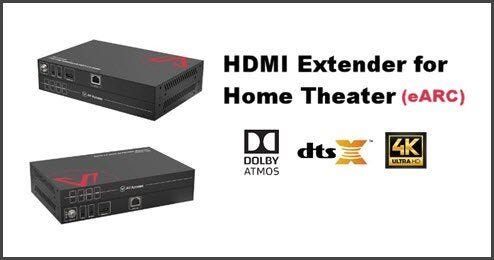Home Theater System Guide: Dolby Atmos or DTS?
As home theater technology has advanced, the number of surround sound formats supported by TVs, soundbars, and AV receivers has grown. There are plenty of options for an immersive audio experience at home. There are a handful of audio formats for your surround sound system: DTS, DTS:X, Dolby Digital, Dolby Atmos, etc.
How to choose among them? What are the differences? More details are to be explained.
Audio for home theater
DTS and Dolby have their own defenders. Some people favor DTS for its compression with higher bitrates; others argue that Dolby lab is more reliable for its long history and authority and the tech is well done to preserve the music of good quality even at lower bitrates.
However, the good thing is that, in most cases, DTS and Dolby Atmos have a comparable set of audio formats and most TVs and home theater systems that support one of them, would support the other as well. The only thing you shall take good care of is that the peripheral devices/wiring used for the whole connection shall be supportive as well.

Dolby Digital vs. DTS?
So what are the differences between Dolby Digital and DTS? There are some variants developed by both companies and we will have a closer look at them in the discussions below.
Dolby Digital
Dolby Digital is a multi-channel audio codec developed by Dolby Labs. This standard of audio renders viewers a terrific surround sound experience and is widely used in cinema and has been trickled down to home theaters as well.
Dolby Digital first came into cinema in 1992, with the movie Batman Returns. Later, the lab developed more standards of codecs such as Dolby Digital Plus, Dolby TrueHD, and Dolby Atmos that support surround sound systems with up to 7.1 channels.
About DTS
DTS came into life in 1993 and was then used in the blockbuster, Jurassic Park. It successfully broke into the market and has always been the main competitor of Dolby Labs.
Dolby may enjoy a bigger name, while some supporters of DTS insist that it provides a better sound quality via the codec that is done at higher bitrates.
DTS also launched a collection of more advanced surround sound codecs, including DTS-HD, which supports up to 7.1 speaker channels, DTS-HD Master Audio, a lossless format, and DTS:X, which competes with Dolby Atmos.
Dolby Digital vs DTS
In fact, Dolby Digital and DTS can both produce amazing surround sound experiences. Well, there are some fundamental distinctions in how they do it.
Key differences are the compression levels and bit rates. Dolby Digital compresses 5.1 digital audio to a bit rate of:
- Up to 640 kbits/s for Blu-ray discs
- Up to 448 kbits/s for DVD discs
DTS is less compressed and the codec sustains bit rates at 1.5Mb/s. Some DVD discs feature a bit rate of 1.5Mb/s, however, the majority have a soundtrack encoded at 754kbps.
Differences in the use?
Dolby Atmos creates a special sound effect by placing speakers on the ceiling. Dolby Atmos soundbars were also launched for users who don’t wanna dig holes in their ceilings. They use vertical drivers that bounce sound off the ceiling and cause a similar sound effect.
DTS:X is more flexible and compatible. It does not require additional overhead speakers and will work with a normal surround sound system. You may also manually change sound objects to increase the level of voices of a certain soundtrack.
ARC and eARC for Home Theater
To enjoy the immersive surround sound, people connect their Blu-ray player, set-top boxes, or gaming consoles to the Dolby Atmos or DTS home theater system and have the sound broadcast via the AVR. What if we play movies on a smart TV? That’s when you would need the ARC or eARC feature to send the TV sound back to the AVR.
An eARC HDMI extender helps return audio signals from your TV to the AV receiver that might be hundreds of feet away in the basement. AV Access eARC HDMI extender is the solution to long-distance HDMI transmission with an eARC feature supported. The HDMI extender supports up to 4K@60Hz (4:4:4) for a transmission distance of up to 70m/230ft over an Ethernet cable. Even though you are watching movies on the smart TV, you can still enjoy the sound experience at the cinema level.
You may also be interested: Screen Flickering Tips: 7 Causes and Fixes
Conclusions
Audio formats are developing for better audio experiences. Whether it’s DTS:X or Dolby Atmos, you will be given a spectacular home theater experience. Besides upgrading your equipment, don’t forget to make sure your wiring cables, HDMI extenders, TVs, and AVR systems are all supportive of the audio you have chosen.
Source: https://www.avaccess.com/blogs/guides/home-theater-dolby-atmos-and-dts/

